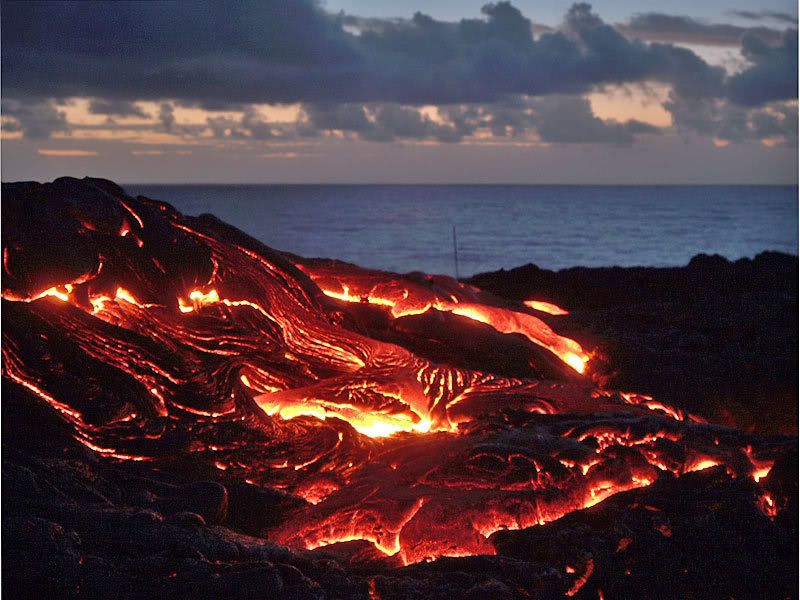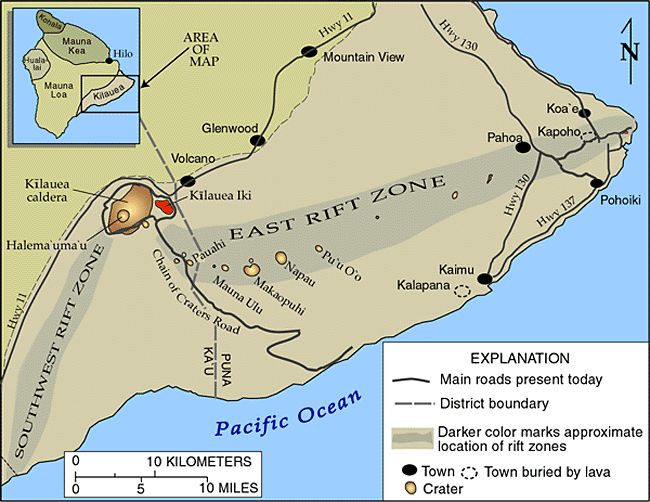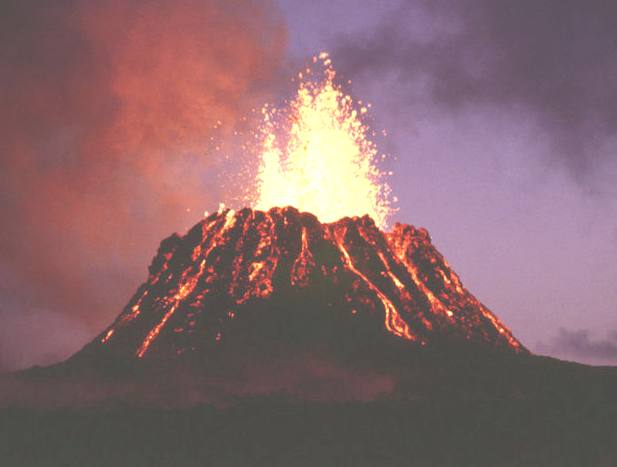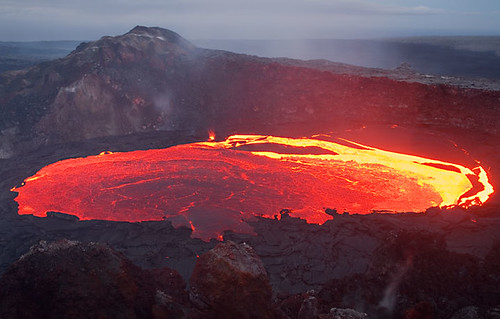
 The eruption of Kilauea in Hawaii occurs continuously for 18 years with 55 major eruptive episodes that have as the first actor Pu `u crater` O `o and starring the caldera Kupaianaha the and Lava Tube growing coastal lava platform terminal site of the lava eruption.
The eruption of Kilauea in Hawaii occurs continuously for 18 years with 55 major eruptive episodes that have as the first actor Pu `u crater` O `o and starring the caldera Kupaianaha the and Lava Tube growing coastal lava platform terminal site of the lava eruption. the 55th eruptive episode will be the most voluminous lava emission of the last five centuries. During January 2000, 1.9 cubic km of lava coperto102 square miles of land, part of the south coast of Kilauea has increased by 205 acres, 181 homes were destroyed and covered 13 km of paved road under 25 meters of lava.
The eruption began in 1983 with a series of sudden fountains of lava that fueled the growth of the cinder cone and lava Pu `u` O `or . In 1986, the eruption shifted 3 km more giù nella "Zona Est del Rift" dove si formò la caldera Kupaianaha serbatoio di lava che alimenterà per i prossimi 5 anni la colata di lava verso il mare. Nel 1992 un grande collasso sul cono Pu`u O`o determinò la continua eruzione di lava che da alcune fessure del fianco occidentale e meridionale andrà per anni (sino ad tuttora) al mare creando ed attraversando un tubo lavico .
L'arcipelago delle isole Hawaii è ciò che emerge di una catena sottomarina di origine vulcanica. Lunga circa 3500 Km, si estende nell' Oceano Pacifico da NE a SO con numerosi vulcani attivi, spenti e sottomarini. Le isole Hawaii si sono formate in milioni di anni con lo spostamento da NE a SO del punto caldo che attualmente è posizionato sotto la Big Island. Con il passar dei millenni il punto caldo tenderà a muoversi verso SO creando nuove isole. Il vulcano sottomarino attivo Loihi (-900 mt), sarà il primo ad emergere allungando l'arcipelago. Nel Mondo queste isole sono il miglior laboratorio naturale per lo studio dei fenomeni vulcanici. Allineando e misurando le otto principali isole si raggiunge una lunghezza di 640 km esse sono: Hawaii (Big Island), Maui, Molokai, Lanai, Kahoolawe, Oahu (with the capital of Honolulu), Kauai, Nihau.

In 1984 an eruption began in the eastern rift zone of Kilauea. Massive lava fountains were first built a cinder cone, named after Pu'u'o, but soon the eruptive center has migrated east where they are formed and the beautiful lake of lava shield Kupaianaha. The lava flows, for the most part hidden in tunnels, they soon reached the Pacific Ocean. The activity was almost continuous from the beginning of the eruption, although currently the eruptive center is returned to the crater Pu'u'o.






If you liked the article, subscribe to the feed to stay updated on new blog content:

0 comments:
Post a Comment